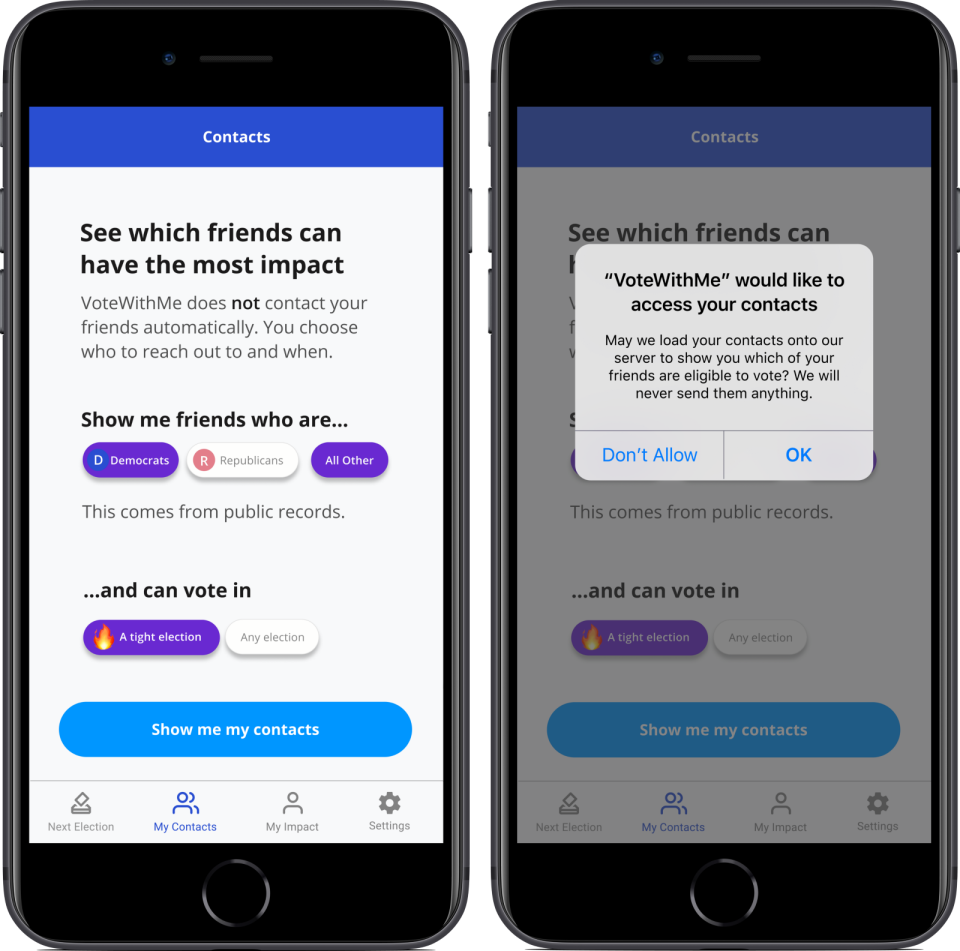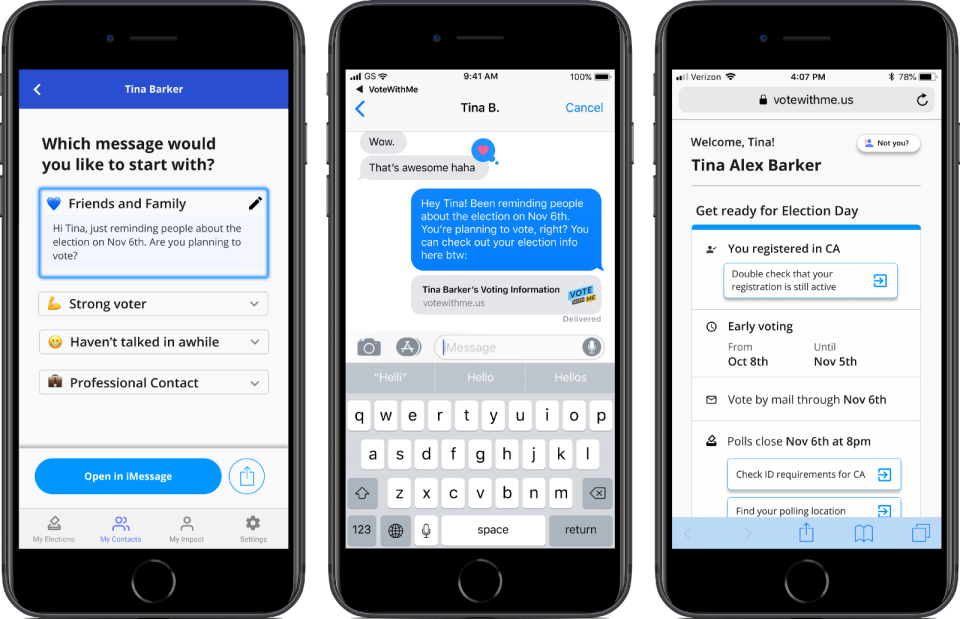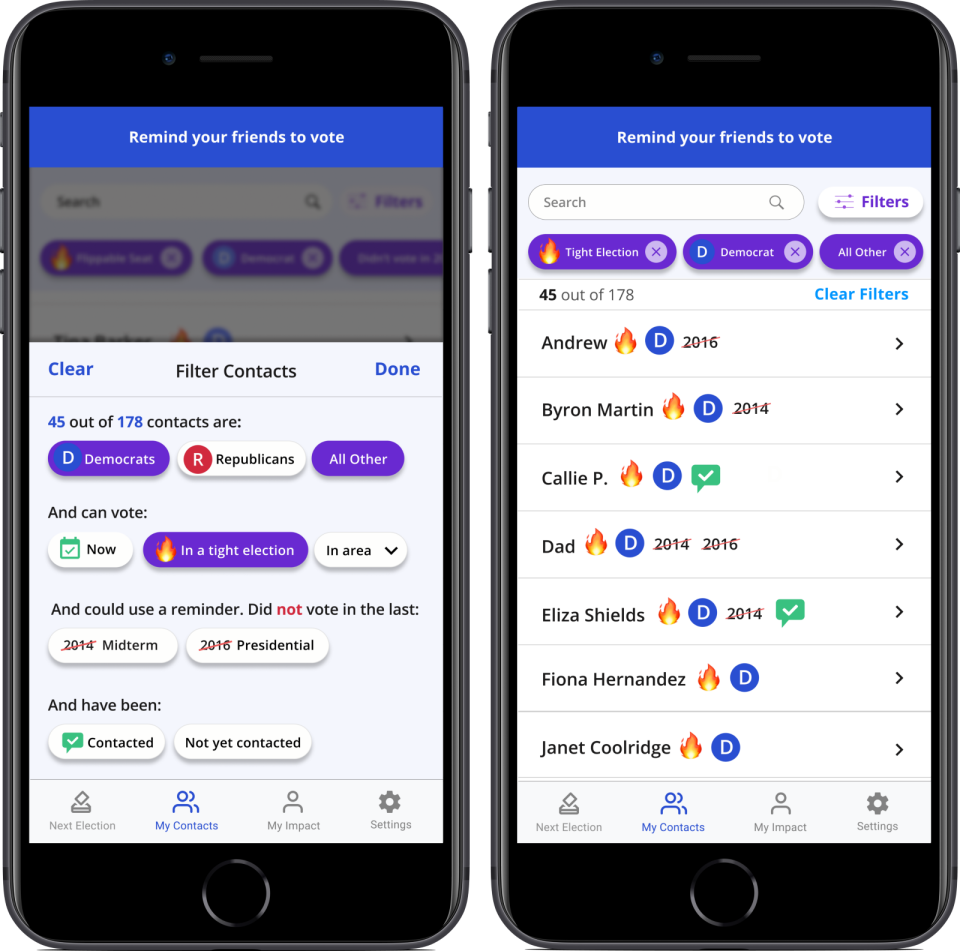New app reveals your contacts' voting history
Have you ever wondered if your friends and family are exercising their right to vote? The New Data Project, a nonprofit organization, has the only tool you need to do just that.
VoteWithMe is a free app, available on both iOS and Android, that mines your contact list and reveals your friends’ voter statuses, which party they’re registered with, and whether they voted in the most recent elections — primaries, midterms, and generals.

“One really interesting thing we found was getting your own friends out to vote was one of the most effective ways to get out the vote,” Sarah Sullivan, deputy director of the New Data Project, told Yahoo Finance.
While who someone voted for can never be revealed, VoteWithMe does give some insight into how civically minded your friends, family members, and colleagues may be.
“This kind of technology that we’ve built holds a lot of promise for future elections,” Sullivan said. While she concedes that relational organizing is a “concept as old as time,” Sullivan explained that pairing that motivating factor with the technology is what makes the difference.
‘What movements were built on’
“Getting your friends out to vote is what movements were built on,” she added. “What we’re doing is we’re applying technology to see which of your friends is the most important to try to get out to vote. We’ve created something using technology [to see] who in your network you should try to get out to vote first.”
If all of that sounds too personal or invasive, remember that all of that information is already publicly available: Each state maintains a publicly available voter record, which is what VoteWithMe was built on.
“We’re not a data provider. We have built a service on public data that is out there,” Sullivan said. This, of course, can lead to some mismatches or failed matches. She explained that the software is not flawless, but can merely be used as a starting point.

“You’ll see a number of your contacts won’t come back with matches. ‘Mom’ cannot be found in any state’s voter file,” Sullivan gave as an example. “We then allow you to go through a workflow to manually enter the information. We don’t know your mom’s name, but you do. Very often you will unlock more searches that way. What we’re trying to do in general is marry this public information with the information you have on your contacts so that you can reach out to your contacts in the best way.”
The app also gives users information about upcoming local elections and shows which races are going to be tight, indicated with a fire emoji.
‘Voting-age turnout has remained within an 8.5-percentage-point range’
The New Data Project relaunched the app in September 2018, after taking feedback from users. The team conducted a randomized control test in Pennsylvania’s special election in March 2018. (Get more details about the changes they made here.)
“We’re democratizing the public data that was out there. The reason we decided to do that was because social pressure messaging is one of the few tactics that’s really motivating,” Sullivan said. With that being said, Sullivan also noted that she doesn’t “think of technology as solving all of our democracy problems.”

The United States has one of the lowest voting turnouts among developed countries, according to Pew. In the 2016 presidential election, only 56% of eligible voters cast ballots — and that was considered a higher than usual turnout.
“Since 1976, voting-age turnout has remained within an 8.5-percentage-point range — from just under 50% in 1996, when Bill Clinton was re-elected, to just over 58% in 2008, when Barack Obama won the White House,” the Pew study explains.
“Our goal was not to get the people who were already voting. Obviously, tactics are not working the same across age groups,” Sullivan told Yahoo Finance. “Young people are more likely to download an app than older people, and they’re even more likely to listen to their friends.”
Katie is an associate editor at Yahoo Finance. Follow her on Twitter.
Read more:
Women are now 42% of U.S. breadwinners — but also ‘underestimate the costs of motherhood’
Amazon’s minimum wage is now $15 — here’s how that compares to US states
This college dropout makes six figures rating dogs on the internet
Follow Yahoo Finance on Twitter, Facebook, Instagram, Flipboard, LinkedIn, and reddit.

